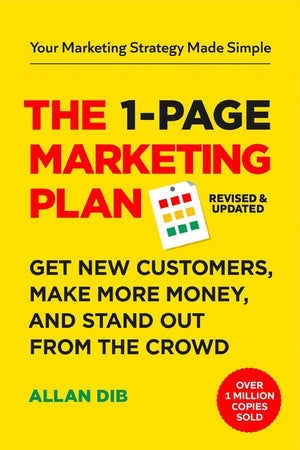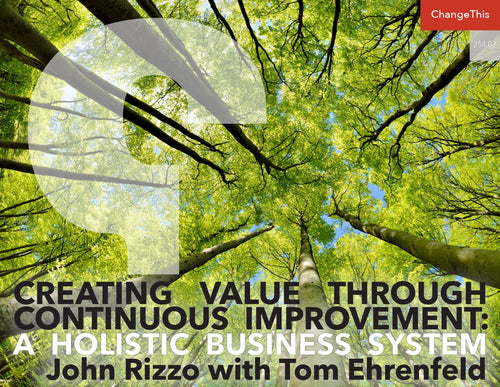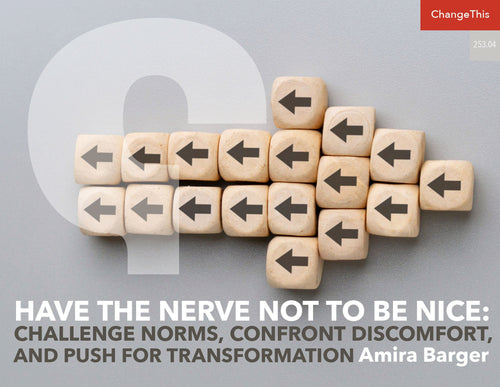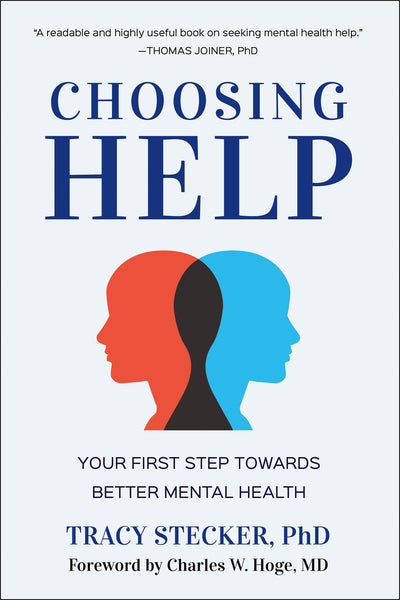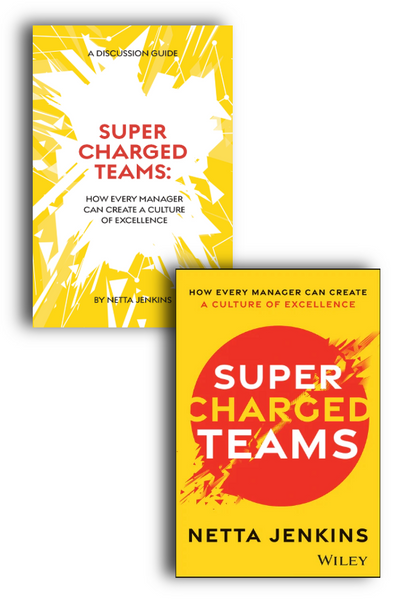Best Marketer Wins: The Blueprint for Attracting, Converting, and Retaining Customers
You can have the best product or service in the world, but without a marketing plan, it will never be seen. Allan Dib offers a tool to build that plan without needing to spend years becoming a marketing expert.
Have you ever wondered why so many businesses plateau at a mediocre level?
The statistics vary on the exact percentage of businesses that fail within the first five years. Some estimates put it as high as 90%. I’ve never seen anything less than 50%. That means that, if we’re being super optimistic, you have a 50/50 chance of still having your doors open after five years.
Here’s where it gets worse: The statistics only take into account businesses that completely cease trading. They don’t take into account businesses that limp along, making the lives of their owners miserable.
At one end of the spectrum, there are entrepreneurs who work sixteen-hour days and weekends and never take holidays while barely making enough to keep their heads above water. At the other end, some have made their business a well-systematized profit machine that runs with or without them. They work reasonable hours and live a life of fun, freedom, and fulfilment. It seems like their primary business activity is counting the huge sums of money that keep rolling in.
Having seen and lived both ends of this spectrum, I know the few things that make all the difference.
It’s very common for small businesses never to grow past the point of generating a modest living for their founders. It seems that no matter how hard they try, their efforts to get to the next level just lead to frustration. At this point, one of two things happens. Either they get disillusioned and quit, or they accept their fate—that their business is nothing more than a low-paid, self-created job.
The reality is that many entrepreneurs would be better off just finding a job in their industry. They’d likely work fewer hours, have less stress, enjoy more benefits, and have more holiday time than in the prison they have created for themselves.
Many small business owners fall into the trap described in Michael Gerber’s classic book, The E-Myth Revisited. That is, they are a kind of technician—a plumber, a lawyer, a dentist— and good at what they do. They’ve had what Gerber describes as an “entrepreneurial seizure,” and start to think to themselves, “Why should I work for this idiot boss? I’m good at what I do—I’ll start my own business.”
This is one of THE major mistakes made by most small business owners. They go from working for an idiot boss to becoming an idiot boss. Here’s the key point—just because you’re good at the technical thing you do, doesn’t mean that you are good at the business of what you do. This is an important distinction and a key reason that small businesses fail. The entrepreneur may have excellent technical skills, but a lack of business skills causes them to fail.
This is not meant to discourage you from entrepreneurship. However, you must resolve to get good at the business of what you do, not just the technical work. A business can be an amazing vehicle for achieving financial freedom and personal fulfillment—but only if you master the skills required to run it successfully.
PROFESSIONALS HAVE PLANS
Look at any profession where the stakes are high, and you’ll see a well-thought-out plan being followed. Professionals never just wing it.
- Doctors follow a treatment plan.
- Airline pilots follow a flight plan.
- Soldiers follow a military operation plan.
How would you feel about engaging the services of any of the above professions if the practitioner were to say to you, “Screw the plan. I’ll just wing it.” Yet this is exactly what most entrepreneurs do.
Invariably, when someone makes a mess of something, it often becomes clear in the aftermath that they didn’t have a plan. Don’t let that be you and your business. While no one can guarantee your success, having a plan dramatically increases your odds.
Just as you wouldn’t want to be on a plane where the pilot hadn’t bothered with a flight plan, you, your family, and your employees don’t want to be relying on a business without a plan. Often the stakes are almost as high. Marriages, partnerships, jobs, and more are frequent casualties of failed businesses.
It’s more than just your ego on the line. It’s time to “go pro” and create a plan.
THE WRONG KIND OF PLAN
Early into my first business, I was smart enough to realize that a business plan was going to be important to my success. Unfortunately, that’s where my smarts ended.
With the help of a business consultant (who’d never actually run a successful business of his own), I ended up many thousands of dollars poorer but had a document that most business owners never bother with—a business plan.
My business plan was over 70 pages long, with graphs, charts, projections, and much, much more. It was a beautiful-looking document.
After it was written, I shoved it in the top drawer of my desk and never saw it again until the day we were moving offices, and I had to clean out my desk.
I dusted it off, flicked through it, and tossed it in the trash, angry at myself for the money I’d wasted on that phony-baloney consultant. However, later, when I thought about it more carefully, I realized that while the document itself was mostly nonsense, the process I had gone through with the consultant was valuable in clarifying some key elements of my business, particularly one key section called “the marketing plan.”
In fact, a lot of what we did to create the marketing plan shaped the business and drove much of our future success.
WHAT IS MARKETING?
Some people think marketing is advertising, branding, or some other vague concept. While all these are associated with marketing, they are not the same thing.
Here’s the simplest, most jargon-free definition of marketing you’re ever likely to come across:
If the circus is coming to town and you paint a sign saying “Circus Coming to the Showground Saturday,” that’s advertising.
If you put the sign on the back of an elephant and walk it into town, that’s promotion.
If the elephant walks through the mayor’s flower bed and the local newspaper writes a story about it, that’s publicity.
And if you get the mayor to laugh about it, that’s public relations.
If the town’s citizens go to the circus, you show them the many entertainment booths, explain how much fun they’ll have spending money at the booths, answer their questions and, ultimately, they spend a lot at the circus, that’s sales.
And if you planned the whole thing, that’s marketing.
It’s as simple as that—marketing is the strategy you use for getting your ideal target market to know you, like you, and trust you enough to become a customer. All the stuff you usually associate with marketing is tactics. We’ll talk more about strategy versus tactics in a moment.
However, before we do that, you need to understand that marketing has undergone a fundamental shift, and things will never be the same.
THE ANSWERS HAVE CHANGED
Once upon a time, you placed a few ads, paid a truckload of money, and your marketing for the year was done. Now you have search engines, social media, podcasts, websites, and a myriad of other things to think about.
The internet and digital economy have opened up a world of opportunities—and competitors. Whereas previously your rivals might have been across the road or in your town, now they can be on the other side of the globe.
As a result, many who are trying to market their businesses become paralyzed by the “bright shiny object syndrome.” They get caught up in whatever the “hot” marketing tools, tactics, or platforms are right now and never figure out the big picture of what really works in their market and why.
Let me show you why this leads to a world of pain.
STRATEGY VS. TACTICS
Understanding the difference between strategy and tactics is key to your marketing success.
Strategy is the big-picture planning you do prior to implementing that plan with tactics. Imagine you’ve bought an empty plot of land and want to build a house. Would you just order a pile of bricks and start laying them? Of course not. You’d end up with an unsafe mess.
So what do you do instead? You hire an architect first, and they plan everything out from the major stuff, like getting building permits, down to the placement of electrical outlets and switches. All of this is planned prior to a single shovel of dirt being moved. That’s strategy. Then, once you have your strategy, you know what materials you need, where the foundations go, what kind of roof you’re going to have, and all the rest. Now you can hire builders, bricklayers, carpenters, plumbers, electricians, and so on. That’s tactics. You can’t succeed at anything worthwhile without both strategy and tactics.
Strategy without tactics leads to paralysis by analysis. No matter how good the builder and the architect are, a house isn’t going to get built until someone starts laying bricks. At some stage, they need to say, “Okay, the blueprint is good. We’ve got all the necessary approvals to build. Let’s get started.”
Tactics without strategy lead to randomness and chaos. You start building a wall without any plans—a safe bet, surely; you’ve got to have walls, don’t you?—and then find out it’s in the wrong place. You remember you should probably have started with the foundations, so you switch to pouring those, only to discover it’s the wrong kind for supporting the house you want to build. So you forget the house and start excavating the area where you want the pool. Unfortunately, you then realise you wanted your living room there. This clearly isn’t going to work. Yet it’s exactly how many entrepreneurs approach marketing. They string together a bunch of random tactics in the hope that what they’re doing will lead to a customer. They whip up a website without much thought, and it ends up being a static, boring online brochure. They start promoting themselves on social media only to find that their efforts fall flat—no engagement, no leads, just a lot of time wasted chasing “likes” that never turn into sales. They dabble in paid ads only to end up with costly, low-quality leads. Each initiative is chosen on a whim.
To be successful, you need both strategy and tactics, but strategy must come first, and it dictates the tactics you use. This is where your marketing plan comes in. Think of your marketing plan as the blueprint for attracting, converting, and retaining customers.
I HAVE A GREAT PRODUCT OR SERVICE, DO I REALLY NEED MARKETING?
Many entrepreneurs fool themselves into thinking that if their product is excellent, the market will buy it. While “if you build it, they will come” makes a great movie plot, it’s a terrible business strategy: expensive and with a high rate of failure. History is littered with technically superior products that failed commercially.
Good—even great—products are simply not enough. Marketing must be one of your major activities if you’re to have business success.
Ask yourself, when does a prospect find out how good your product or service is? The answer, of course, is—after they buy. If they don’t buy, they’ll never know how good your products or services are. As Thomas Watson from IBM famously said, “Nothing happens until a sale is made.”
Therefore, we need to clearly understand an important concept: a good product or service is a customer-retention tool. If we give our customers a great product or service experience, they’ll buy more from us, refer others to us, and build our brand equity through positive word of mouth. However, before focusing on customer retention, we need to consider customer acquisition (also known as marketing). The most successful entrepreneurs always start with marketing.
HOW TO KILL YOUR BUSINESS
If you’re a business owner, entrepreneur, or business leader, you’ve no doubt given some thought to marketing and advertising. What approach will you take? What are you going to say in your advertising? How will you reach your market?
A common way these things are decided is by looking at large, successful competitors in your industry and mimicking what they’re doing. This seems logical—do what other successful businesses are doing and you’ll also become successful. Right? This is a disastrous marketing mistake and could potentially kill your business. Here are the two major reasons why.
#1 LARGE COMPANIES HAVE A DIFFERENT AGENDA | Large companies have a very different agenda when it comes to marketing than small and medium-sized businesses do. Their strategies and priorities differ significantly from yours.
The marketing priorities of a large company look something like this:
- Pleasing the board of directors
- Appeasing shareholders
- Satisfying superiors’ biases
- Satisfying existing clients’ preconceptions
- Winning advertising and creative awards
- Getting “buy-in” from various committees and stakeholders
- Making a profit
In contrast, the marketing priorities of a small to medium-sized business look more like this:
- Making a profit
As you can see, there’s a world of difference. So naturally there should be a world of difference in strategy and execution.
#2 LARGE COMPANIES HAVE A VERY DIFFERENT BUDGET | It’s very important to understand that strategy changes with scale. Do you think someone investing in and building skyscrapers has a different property investment strategy than the average small property investor? Of course. Using the same strategy simply won’t work on a small scale. You can’t just build one floor of a skyscraper and have success. You need all 100 stories.
If you have an advertising budget of $10 million and three years to achieve a profitable result, you’ll use a very different strategy than someone needing to make a profit immediately with a $10,000 budget.
Using a large company marketing strategy, your $10,000 will be totally wasted and ineffective because you’re using the wrong strategy for the scale that you’re operating at.
SMALL AND MEDIUM BUSINESS MARKETING
If $10 bills were being sold for $2 each, how many would you buy? As many as you could get your hands on, naturally! Direct response or performance marketing are branches of marketing that give small and medium-sized businesses cut-through on a tight budget. They’re designed to ensure you get a return on investment that’s measurable. The name of the game with direct response or performance marketing is “money at a discount.” For example, for every $2 spent on advertising, you get $10 out in the way of profits from sales.
It’s also a highly ethical way of selling. It focuses on the specific problems the prospect has and aims to solve these with education and specific solutions. It’s also the only real way for a small and medium-sized business to affordably reach and convert prospects. Direct response or performance ads are lead-generating tools rather than just name-recognition tools.
Direct response or performance marketing is designed to evoke an immediate response and compel prospects to take a specific action, such as opting in to your email list, making a phone call, placing an order, or being directed to a landing page. Here are some of the main characteristics of this type of marketing:
It’s trackable. That is, when someone responds, you know which ad and which piece of media was responsible for generating the response. This is in direct contrast to mass media or brand marketing—no one will ever know what ad compelled you to buy that can of Coke; heck, you may not even know yourself.
It’s measurable. Since you know which ads are being responded to and how many sales you’ve received from each one, you can measure exactly how effective each ad is. You then drop or change ads that are not giving you a return on investment.
It uses compelling headlines and sales copy. Direct response and performance ads feature a compelling message that strongly resonates with the target audience. Attentiongrabbing headlines with compelling sales copy. Often, the ad looks more like an editorial than an ad, making it at least three times more likely to get read.
It targets a specific audience or niche. Prospects within specific verticals, geographic zones, or niche markets are targeted. The ad aims to appeal to a narrow target market and makes a specific value-packed offer. Often, the aim is not necessarily to sell anything from the ad but to simply get the prospect to take the next action, such as requesting a free resource. The offer focuses on the prospect rather than on the advertiser and talks about the prospect’s interests, desires, fears, and frustrations. By contrast, mass media or brand marketing employs a broad, one-size-fits-all marketing message and focuses on the advertiser.
It demands a response. Direct response and performance ads have a “call to action,” compelling the prospect to take a specific action. It also includes a mechanism for responding to and capturing these responses. Interested, high-probability prospects have easy ways to respond, such as a phone number, an email address, or a landing page. When the prospect responds, their contact information is captured so that they can be contacted beyond the initial response.
It includes multi-step, short-term follow-up. In exchange for the prospect’s contact details, valuable information on their problem is offered. This should carry with it a second “irresistible offer”—tied to whatever next step you want the prospect to take, such as scheduling an appointment, booking a demo, or coming into a showroom or store. Then, a series of follow-up “touches” via different media, such as email, text message, postal mail, and phone, is made. Often, there is a time or quantity limit on the offer.
It incorporates maintenance follow-up of unconverted leads. People who don’t respond within the short-term follow-up period may have many reasons for not maturing into buyers immediately. There’s value in this bank of slow-to-mature prospects. They should be nurtured, and continue hearing from you regularly.
Direct response and performance marketing are very deep topics with many facets. The 1-Page Marketing Plan is a tool that helps you implement them in your business without needing to spend years studying to become an expert.
It’s a guided process that helps you quickly and easily create a powerful marketing system that delivers a tangible return on investment and, when done well, elevates your brand within your target audience.
THE THREE PHASES OF THE MARKETING JOURNEY
The marketing process is a journey we want to guide our ideal target market through. We want to guide them from not knowing we exist right through to becoming customers and raving fans.
This journey has three distinct phases: the Before, During, and After phases. The following is a brief overview of each of these.
BEFORE | We label people going through the before phase as prospects. At the beginning of the “before” phase, prospects typically don’t even know you exist. Successful completion of this phase results in the prospect knowing who you are and indicating interest.
DURING | We label people going through the during phase as leads. At the beginning of the “during” phase, leads have indicated some interest in your offer. Successful completion of this phase results in the prospect buying from you for the first time.
AFTER | We label people in this phase as customers. Depending on what type of business you’re in, this label could be customer, client, patient, or something else entirely. At the beginning of the “after” phase, customers have already given you money. The after phase never ends and, when executed correctly, results in a virtuous cycle where the customer buys from you repeatedly and is such a fan of your products or services that they consistently recommend you and introduce you to new prospects.
YOUR TRANSFORMATION FROM BUSINESS OWNER TO MARKETER
One of the commonalities among high-growth businesses is that they have a strong focus on marketing. They make marketing a regular routine in their business, and execute their marketing plan continuously. Failed and struggling businesses either neglect marketing altogether or do random acts of marketing with no plan or structure. They try random tactics once or twice and give up when they don’t see immediate success. That’s not a marketing plan—that’s a recipe for disaster.
Others mistakenly believe that having a great product or service is enough to “get the word out there.” The graveyards of failed businesses are full of excellent products and services. For the most part, they failed because those running them didn’t pay enough attention to marketing. Remember, no one knows how good your products or services are until after the sale. Before they buy, they only know how good your marketing is.
Put simply, the best marketer wins every time.
Adapted from The 1-Page Marketing Plan. Copyright © 2025 by Lean Marketing Group LLC. All rights reserved.
About the Author
Allan Dib is a rebellious marketer, serial entrepreneur, and #1 bestselling author of The 1-Page Marketing Plan and Lean Marketing. Allan has made it his life’s work to help you master marketing with simple frameworks and a clear, structured approach.
Huffington Post named The 1-Page Marketing Plan one of the “10 Best Marketing Books”. It has been translated into over 40 languages and has changed the way over a million businesses globally are marketing.
Allan is the founder of Lean Marketing, a marketing accelerator that helps individuals and organizations implement marketing best practices in-house using his 1-Page Marketing Plan (1PMP) framework and lean marketing methodology.


